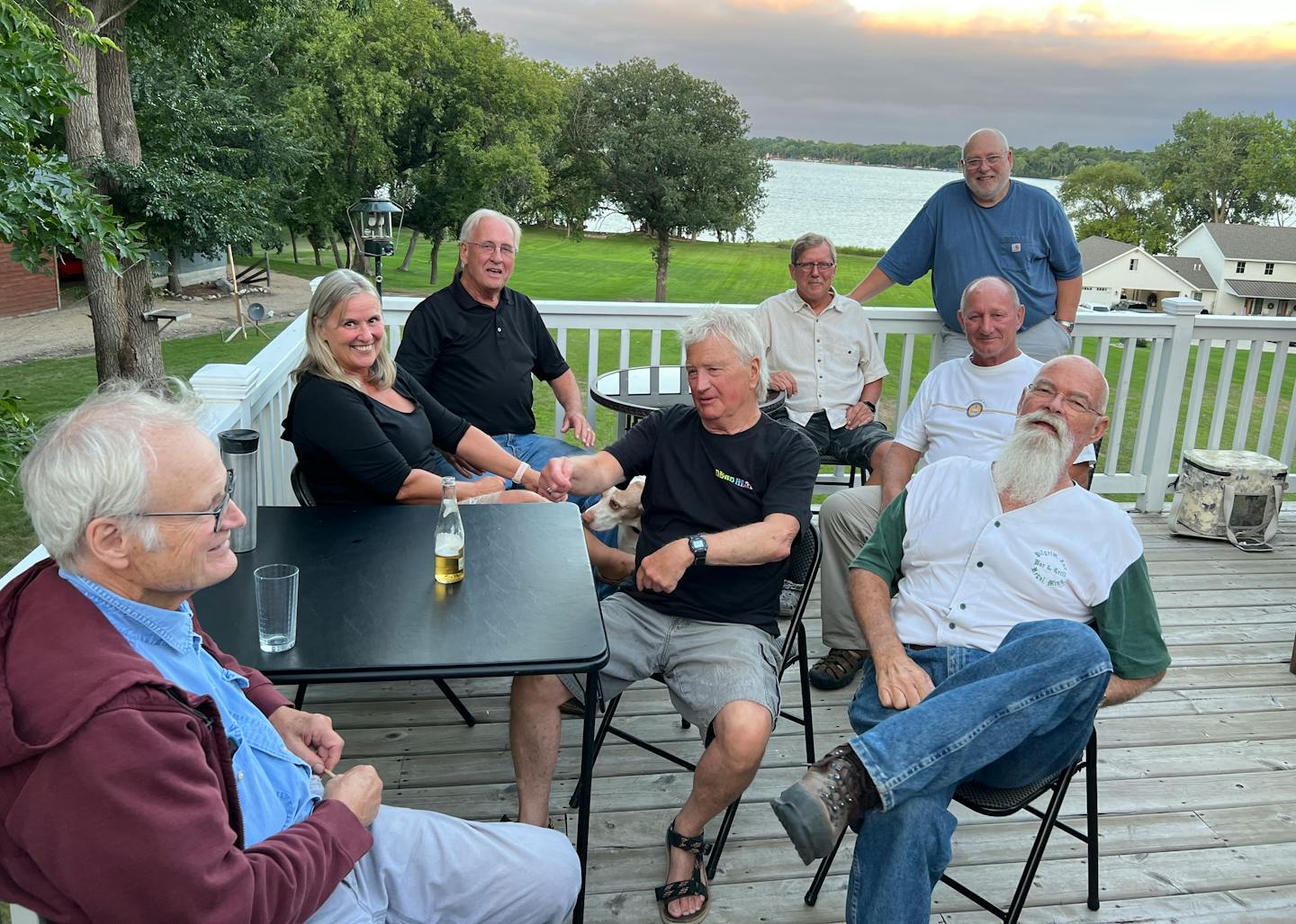 See
more of the story
See
more of the story
WILLMAR, Minn. — The other night on a deck overlooking Eagle Lake near this west-central Minnesota town, a bunch of us who had gathered nearly on the same spot some 40 years ago got together. There were a few more gray hairs this time. But among those in attendance, a kennel or two of bird dogs could still be accounted for. So not all youthful enthusiasm had been lost.
The occasion was the ruby anniversary of Pheasants Forever (PF), a group founded on Aug. 5, 1982, through my column when I was scribbling for the St. Paul Pioneer Press.
I had challenged readers to disregard the mistaken notion that Minnesota's farmlands need to be forever devoid of pheasants or songbirds or other ground-nesting wildlife. In response, by snail mail — the only kind there was at the time — some people sent cash, while others promised to help in any way they could.
The result was that on April 15, 1983, more than 800 people gathered at the old Prom Ballroom in St. Paul to raise about $25,000 for the fledgling bird club. Gov. Rudy Perpich spoke and used the occasion to sign Minnesota's first pheasant stamp into law. Others in attendance included a who's-who of sportsmen and sportswomen, Department of Natural Resources leaders and politicians.
With the money raised, PF's founding board of directors hired Jeff Finden as PF's first executive director. His job was to expand the group beyond the Twin Cities into Minnesota's hinterlands.
This happened first in Kandiyohi County, home of a fellow named Doug Lovander. Like many other conservationists throughout Minnesota's pheasant range, Doug had contacted me saying he wanted to start a Willmar-area PF chapter.
In an attempt to gauge Doug's degree of interest in undertaking the challenging task of organizing a fundraising banquet, I called Doug to inquire, essentially, about his bird-hunting credentials.
"Do you hunt pheasants a lot?'' I asked.
When Doug said, "I conduct my own August roadside counts,'' I figured he was the guy for the job.
So it was the other night when I joined Doug and a couple handfuls of other Willmar-area residents who put together that first Kandiyohi County PF banquet on April 27, 1983, I did so with fond memories.
The reunion was intended not only to recall that first banquet in Willmar, raising some $25,000, but, as importantly, to recall and celebrate the subsequent negotiations that produced the income-sharing strategy that still today makes PF unique among conservation groups.
That strategy has been critical to PF's evolution as one of the nation's largest and most successful conservation organizations, with revenue last year exceeding $82 million. In its ranks are more than 400 employees, including more wildlife biologists than any group or agency except the U.S. Fish and Wildlife Service.
"The thing was,'' Doug said the other evening, "after we had our banquet and raised the money, we weren't sure why we should send it to you and Finden in St. Paul. What were you going to do with it?''
It was a fair question.
PF had been founded to make more upland habitat. But unclear at the time was how exactly money raised at banquets outside the Twin Cities would be distributed to do that. Sure, everyone wanted upland habitat. But there existed as well a similar need to develop an organization that could advocate effectively for pheasants on the local, state and national levels.
As leader of the Kandiyohi group, Doug, in long phone calls to me over many nights in the run-up to their 1983 banquet, repeatedly said, "Why don't we just keep our money and make habitat here in our county?''
Neither I nor any of the others in the metro affiliated with PF at the time had a ready answer.
Finally, it occurred to me to let Doug and his friends keep their money to make habitat in their local area.
Not all of it, of course — PF headquarters would get a nominal fee to facilitate membership, develop a magazine, and perform other necessary duties.
But most of the money could stay local.
Doug tentatively agreed to the idea. But he insisted we meet up at his home on Eagle Lake to talk it through and finalize it.
So Finden and I, together with Bob Larson, a Twin Cities lawyer who was a founding PF board member, drove to Eagle Lake one summer night in 1983.
Greeting us was a scene that could have been in a movie.
Doug had set up a circuslike tent on his lawn, and a dinner of wild pheasant with all the fixings was consumed. Then we — maybe 20 of us in all — retired to the tent, where, at one end, Doug sat without removing his sunglasses, while Jeff, Bob and I huddled at the table's other end.
In between were the others.
By nightfall the deal was done, with everyone present, including Finden and Larson, providing important input.
Earlier this summer, Doug — who in the years since has remained a friend, as have many other PF members in Kandiyohi County — called me to say that some of his founding board group had passed on, and that everyone was getting older.
"We should get together one more time,'' he said.
The other night we did just that, using the 40th anniversary of PF as an excuse.
Together, over food and drinks, we remembered that summer evening in 1983 when we formed an agreement that fueled, and continues to fuel, the growth of PF's more than 750 chapters nationwide.






